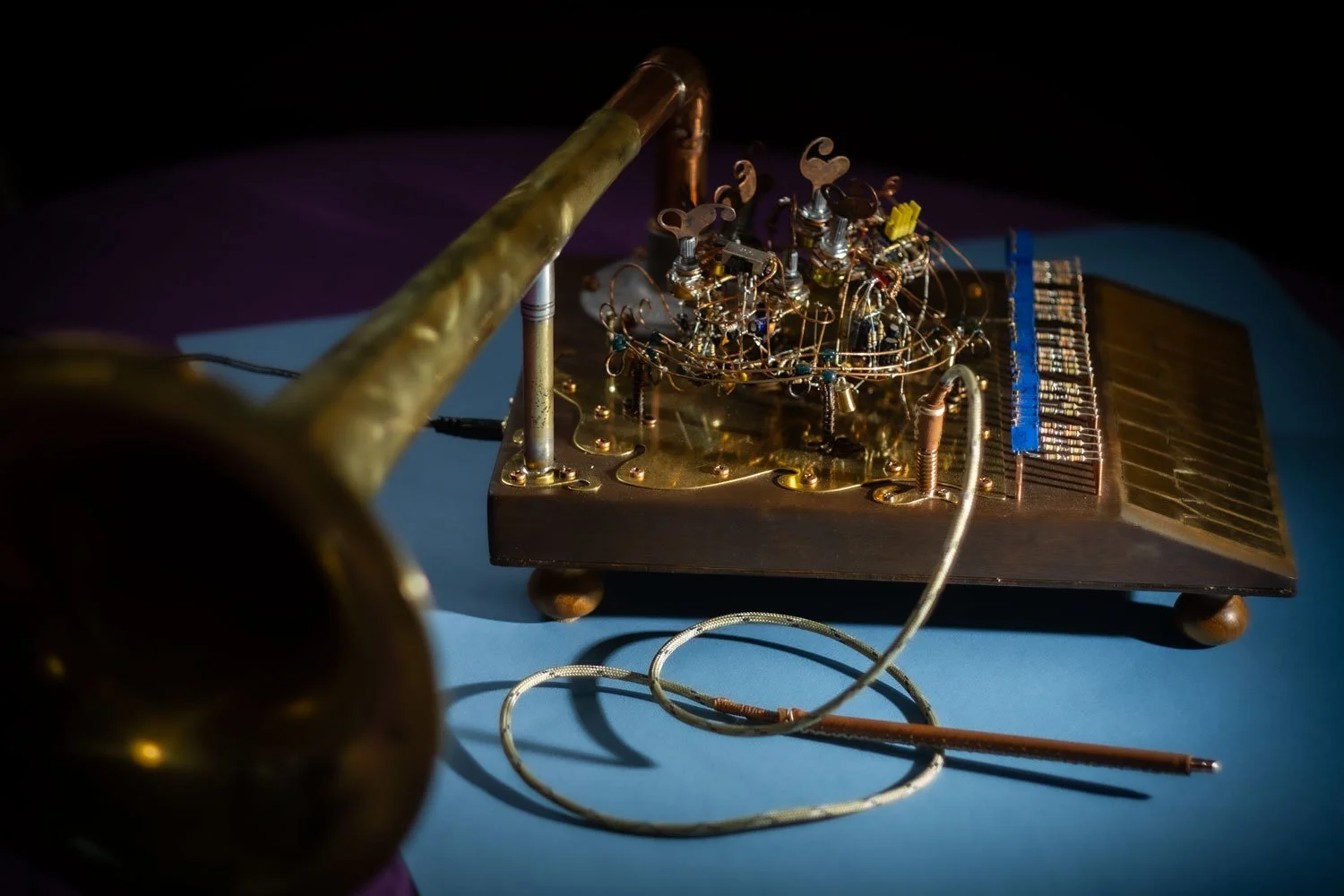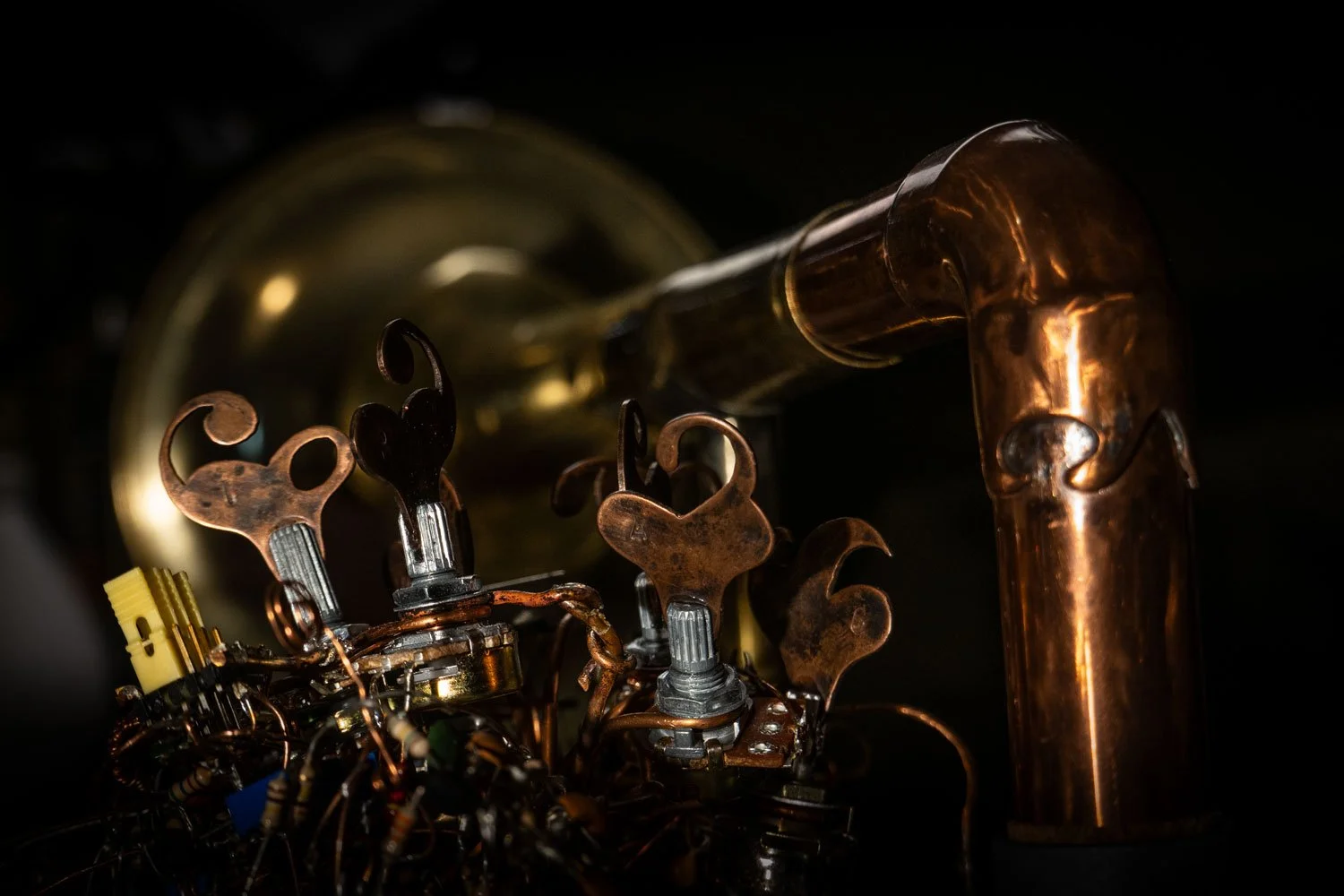The Electro-Stylophonium
Behold the Electro-Stylophonium, creating musical sounds from pure electricity. Just touch the stylus to the magic pads to delight your friends and family with their favorite tunes. Suitable for any drawing room, it takes up less space than a piano. It’s no bigger than a Victrola. So easy, you can begin playing as soon as you have it out of the box. Fun for the whole family. Beautiful to look at, it will add sophistication to the décor of any room. With its shiny, brass surfaces and warm wood tones, it will add just the right note of contemporary style that will have your friends talking for days. Be among the first to embrace the magic of the twentieth century.
Hear the Electro-Stylophonium
Why and How…
I’ve wanted to do a sculptural, free-form, electronics project for some time. In 2023, when I saw a Stylophone in the gift shop of the Musical Instrument Museum in Phoenix, my first thought was, “I could build that.” That’s how I found myself at the entrance to a rabbit hole from which I would emerge two years later with the device featured here.
The vision came quickly as I assembled potential materials from what was lying around in my studio — a piece of butcher block countertop left over from our kitchen remodel, a beat-up trombone from under the guest room bed, scraps from a piece of sheet brass left over from a previous project. The brass and wood combination set the aesthetic tone for the whole project. The use of salvaged and leftover materials became a significant goal as well.
Building the circuit was the biggest challenge. My first attempt I abandoned because it didn’t sound sufficiently musical. For my final design, I took inspiration from the design of the original 1968 Stylophone. I eventually purchased an oscilloscope. It turned out to be key to the success of the entire project. Suddenly, I was able to see what see what was going on in my circuits. With its help, I was able to add functionality not found on the original Stylophone — active, low-pass filter, ADSR envelope, voltage-controlled amplifier, signal shaping. Now, I was finally able to get sounds that feel musical to me.
After months of design and trial and error on the prototype board, it was time to build the permanent, free-form version of the circuit. At that time, I had just returned from a trip to Barcelona where I saw the architectural works of Antonio Gaudi. His work was a significant influence in the sculptural style of my free-form circuit.





